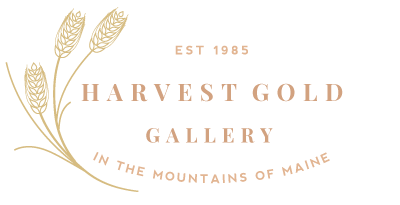Learning About Gems!
Liz here, to share some of what I’ve been up to during this time. Lynda found a free introduction to gemology course and I’ve recently started it. The course starts with a section on rocks and minerals, primarily divided into igneous, sedimentary, and metamorphic rocks. I learned about the lava flows in Oregon, which I had never heard of before. They’re massive!

One of the interesting things I learned about is that there is a vein of former magma in Texas. What’s special about this particular example is that, due to the specific chemicals in the magma, blue quartz was created. It’s the only known example of blue quartz in the world.

An odd fact I learned is that flint is actually formed from sea sponges that existed when an ancient ocean covered the area. The sponge would be buried in silt and eventually form a flint nodule. Crazy!
If you’re also interested in gemology, the International School of Gemology is offering a selection of free online mini courses. So far, I’m enjoying this course and hope to learn a lot!

Something to look forward to…
Even though spring has sprung, we are in the midst of the infamous Maine mud season. Most people are staying home these days, so why not think about summertime? Every summer at Harvest Gold, we have weekly plein air demonstrations. Plein air painting, or en plein air, originated as the technique of painting outdoors in order to better capture lighting and weather. The technique was made famous the Impressionists, such as Monet and Renoir.

“Claude Monet Painting by the Edge of a Wood” by John Singer Sargent, Tate Gallery, London.
At Harvest Gold, we have artists who work in all mediums come to demonstrate their craft en plein air outside the gallery in the parking lot. On a beautiful sunny day last August, William Janelle shared his skills with us. He carved works in both stone and wood, while answering any questions viewers may have had.

Our plein air demonstrations are a wonderful way to see some of our featured artists at work. It brings you closer to the art, physically and mentally. Another artist who often comes to showcase her artistic process is painter Diane Scott. Diane begins her pieces plein air, which we look forward to seeing this summer. After she has begun the painting outdoors, she then brings them inside to finish them, as seen in the photo below.

While we’re all stuck inside (though we hope you’re taking the opportunity to enjoy the outdoors), positive thinking is so important. We hope that giving you something to look forward to helps to brighten your day!
Artist Feature: Gay Freeborn
Gay Freeborn, originally from Palo Alto, California, moved to Maine nearly 40 years ago. Gay attended the Moore College of Art, studying sculpture and design, and later worked as an interior and landscape designer.

“Tsunami”
Gay’s process begins with taking hundreds of pictures of her subjects. By combining these photos, she may find a color in one photo, a wagging tail that’s in one photo and not another, etc. This way, she able to create an image that maximizes the subject matter. “I then convey the motion, shape, and love for the animal with loosely applied sweeping brushstrokes or a pallet knife,” Gay says. She is invested in showing an accurate representation of both the emotionality and physicality of her subjects, which are generally animals.

“Heartbeat”
Gay paints are variety of animals, but most commonly dogs. She is a breeder of Labrador retrievers and shows them all over New England. This expertise gives her a thorough knowledge of the dog’s anatomy. “I keep in mind the movement and shape of the animals more than the realistic image the photograph shows me. This helps to stay loose and less realistic: which is what I strive for.”

“Single Engine Prop”
We think this painting looks like Captain! We hope you have enjoyed learning about artist Gay Freeborn!












